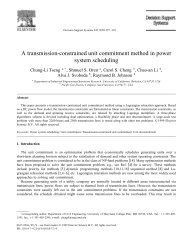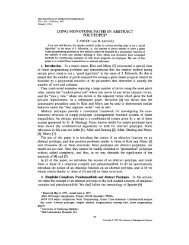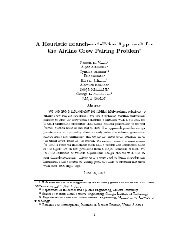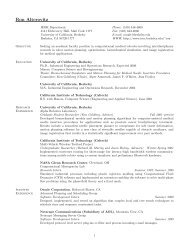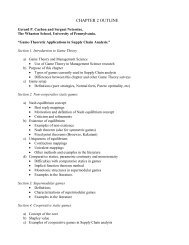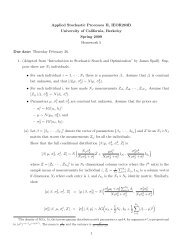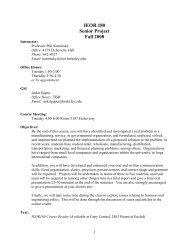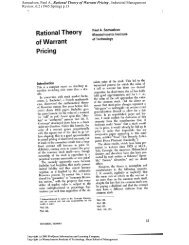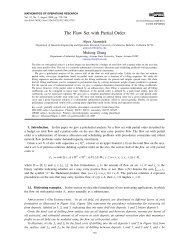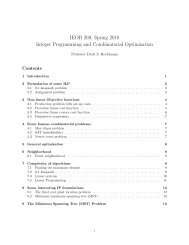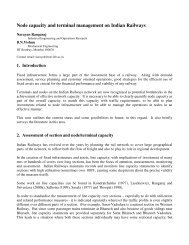IEOR 130 Methods of Manufacturing Improvement Fall, 2013 Prof ...
IEOR 130 Methods of Manufacturing Improvement Fall, 2013 Prof ...
IEOR 130 Methods of Manufacturing Improvement Fall, 2013 Prof ...
You also want an ePaper? Increase the reach of your titles
YUMPU automatically turns print PDFs into web optimized ePapers that Google loves.
(c) What rate efficiency would be sufficient to reduce the number <strong>of</strong> operating steppers<br />
by one without reducing the output?<br />
3. Two alternative processing machines are under consideration. Statistics about machine<br />
performance and maintenance are as follows:<br />
Machine Rework Scrap Avg. PM Avg. Machine Avg. Process time<br />
Rate Rate Hours/Week Failures (Hours) (Hours/lot-pass)<br />
MTBF MTTR<br />
A 0.01 0.001 16 200 8 0.55<br />
B 0.02 0.006 18 100 6 0.50<br />
Assume the fab operates 168 hours per week. The machines process one lot at a time.<br />
When rework is required, the lot must be processed a second time. The average<br />
process time for the second pass is the same as for the first pass. The chance <strong>of</strong> a third<br />
pass is negligible.<br />
(a) What is the average availability <strong>of</strong> each machine type?<br />
(b) The two machines have the same price. From a productivity point <strong>of</strong> view, which one<br />
would you recommend? Explain.<br />
4. An I Line stepper is the bottleneck <strong>of</strong> a small fabrication facility, and management<br />
desires to maximize its output rate. When equipped with a brand new bulb, the lamp<br />
intensity <strong>of</strong> the stepper is approximately 1,000 mW/cm2. The intensity declines after<br />
every wafer exposure until the bulb is replaced. The photo engineer has estimated the<br />
lamp intensity function to be LI(n) = 1,000(0.9994) n , where n refers to the nth wafer<br />
exposed since the bulb was replaced and LI(n) is the lamp intensity realized for the nth<br />
wafer. The total machine down time to replace the bulb and re-qualify the stepper is four<br />
hours. Other stepper data: wafer exchange time XT = 13 seconds, initial alignment time<br />
AT = 27.5 seconds, and move and align time MT = 0.5 seconds. There is only one<br />
exposure step performed by the stepper, with NE = 60 and EE = 1,000 mJ. No blading is<br />
required.<br />
Consider three possible frequencies for changing the bulb: once every 100 wafers, once<br />
every 1,000 wafers, or once every 5,000 wafers. Which frequency would maximize<br />
n<br />
n<br />
i 1<br />
a<br />
stepper output rate? Explain. (Useful fact from algebra: a a .)<br />
i1<br />
1<br />
a<br />
5. In a 24-hour period, a particular photo exposure machine had 2.5 hours <strong>of</strong> down time.<br />
Its rate efficiency was 85 percent. It completed processing <strong>of</strong> 35 lots, but 5 <strong>of</strong> these were<br />
the second run on a lot previously processed (i.e., 5 lots were reworked). The average<br />
process time per machine cycle was 0.5 hours. (One lot is processed per machine cycle,<br />
and a rework lot takes the same amount <strong>of</strong> time as a first-pass lot.)<br />
2




